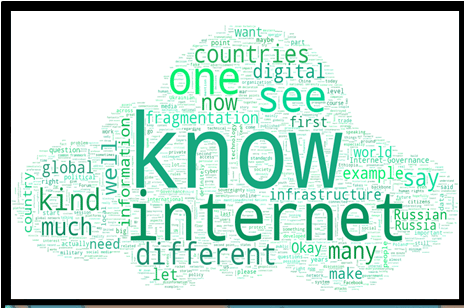LIVING IN AN ERA OF PHYSICAL TRUST VS DIGITAL DISTRUST
Syllabus:
- GS-2 – Important aspects of governance, transparency and accountability, e-governance applications; Development processes and the development industry —the role of institutional and other stakeholders. Social Media-4th pillar of democracy
- GS-3- Awareness in the fields of IT; non-state actors in creating challenges to internal security; basics of cyber security
- GS-4- Ethics in human interface ,Human values , Emotional intelligence, good governance
Focus:
- Digital distrust is prevalent due to data privacy breaches, misinformation, cyber threats, algorithmic bias, platform governance issues, and digital inequality. Concerns about online security, fairness, and transparency have eroded trust in digital platforms, highlighting the need for improved accountability and ethical practices in the digital realm.
Source:- UN
Introduction
- Polarization in society: Trust vs. Distrust-Society’s movement towards extreme ends of the trust spectrum.
- Digital apps have two avatars—one functional & convenienceoriented, the other cosmetic & social. Attitudes towards these influence the larger tussle between the physical and the virtual
- The dominance of digital technology in daily life is presented in the article .
The Dichotomy of Digital Convenience and Social Connection
- Embracing digital convenience: Online bill payments, food delivery, and entertainment.
- He stated that when he had those 40 minutes in a day to spare, he would rather immerse himself in his X and Instagram feed than step out and meet a friend.
- Social media’s role in virtual socialization: Impact on personal interactions. The allure of digital platforms for broadcasting and connecting.
The Shift Towards the Virtual
- Preference for virtual interactions over physical meetings- Growing detachment from real-world experiences due to digital immersion.
- Time allocation: Choosing social media over face-to-face interactions.
Government and Institutional Influence
- Promotion of virtual platforms by governments, schools, and organizations.
- Societal implications of prioritizing the virtual over the real.
The Battle Between Physical Trust and Digital Distrust
- Media landscape: Comparing traditional and digital platforms.
- Evolution of trust: Shifts in public perception of print and digital media.
- Consider the damage inflicted upon ourselves, our relationships, society, mental health, economy, and polity. Most importantly, reflect on how we are raising our children to adapt to a society prioritizing the virtual over the physical.
- Insights from mass market research: Trends in trust towards news sources.
The Changing Landscape: Past, Present, and Future
- Comparison of trust levels in newspapers and digital platforms over time.
- Consumer preferences in various domains: Healthcare, legal services, and consumer products.
- Speculation on the future trajectory: Potential resurgence of physical trust.
Conclusion
- Reflecting on the evolving dynamics between the physical and virtual realms.
- Implications for societal values, relationships, and mental health.
- Considering the balance between the real and the virtual in shaping the future.
- In essence, the article delves into the complex interplay between physical and virtual experiences in modern society, highlighting shifting trends in trust and engagement across different domains.
Source: Indian Express
Mains Practice Question :
GS-2
- How do the trends highlighted in article reflect broader shifts in societal values and preferences? What implications do these trends have for governance, media, and interpersonal relationships in contemporary society?”
GS 4:
- You are a policy analyst working for a governmental think tank tasked with studying the evolving dynamics between real-world interactions and virtual engagements in the digital era. Delve into the multifaceted impact of digitalization on individual behavior, social norms, and collective trust. Explore the challenges arising from the growing preference for virtual interactions over physical engagements, considering implications for mental health, social cohesion, and economic activities. Propose a comprehensive framework that integrates regulatory measures, educational initiatives, and technological innovations to reconcile the benefits of digitalization with the imperative of preserving authentic human connections and societal trust.”




